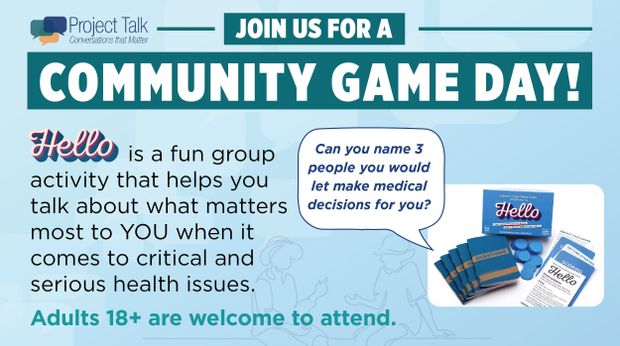The Magic of Empathy
Picture yourself in the middle of a meltdown.
Oh, you don’t have those? Riiiiight.
Anyway, you’re losing it, your face is hot, and your hands are balling up into fists. Maybe you feel like crying or you just want to hit something. Perhaps you are already full on yelling, a human volcano spewing frustration and negativity. A loved one firmly tells you to calm down. You respond with, “You’re right honey. I’m being completely unreasonable right now. I should settle down before I make a fool of myself. I’m sorry.”
That’s not what happens at your house? Good, because mine either.
Why Doesn’t “Calm Down” Work?
To get past a difficult emotion, you need to first identify and embrace that emotion. Once you know what you are feeling and why, you are able to move into a state of mind that allows for more effective problem solving and decision making. When someone tells you to calm down, they are basically suggesting that you skip right past this step and move immediately to the problem solving state of mind. That’s just not how we work. We need that in-between step of identifying the tough feeling and sitting with it for a minute before we can move forward. What’s missing when someone says “calm down” is empathy.
What is Empathy?
Empathy is the ability to understand and share the feelings of another person. It is putting yourself in someone else’s figurative shoes and considering what they might be thinking and feeling. For our purposes here, empathy is a tool – an approach to communication that can be used to diffuse conflict and find common ground in a tense situation.
To use empathy is to listen, not just to the words being said, but to the feelings behind the words. Being empathetic means focusing less on the behavior or actions happening in the moment, and more on the emotions underlying them.
Empathy is listening to understand, not listening to respond. To be empathetic requires us to be present and to set aside what we are thinking and feeling for a second. I’m not saying your own thoughts and feelings are irrelevant. It’s just that, especially in a conflict, exploring two people’s points of view simultaneously doesn’t usually end well. A bonus with empathy is that if you use it well, other people are often more able or ready to hear what you have to say in return.
Tip: Empathy is not problem-solving, criticism, giving demands, setting limits, or sympathy.
Why Use Empathy?
Using empathy validates, or confirms, another person’s experience or emotion.
Feeling understood is a basic need. When someone uses empathy, or listens to the feelings behind our behavior, we feel understood. When we feel understood, we are better able to label and sort out our own emotions and get past them. Empathy forms a bridge between powerful negative emotions and the state of mind we need to be in to resolve the problems that might be causing those emotions.
Think about the last time you were super upset. Like over the top, pulsing vein visible on your forehead, spitting when you talk (shout?) upset. Did you want someone to tell you what to do or set limits on your behavior? Or would it have been helpful for that someone to take a second to listen and really hear what was at the center of your emotions in that moment?
This is not to say that we always need another person’s empathy to calm down. Often, we do the work of sorting our emotions out by ourselves, as in, “I’m just angry because no one is listening to me and there’s toothpaste on the @#% ceiling. Again. (HOW DOES THAT EVEN HAPPEN?!?!) It’s okay though, I can handle this. I’ll just get the step ladder.” But for those moments when we are too overwhelmed to deal, a small amount of empathy can go a long way.
How Do We Use Empathy?
Empathy can be used to diffuse an escalating situation, find common ground during an argument, identify the cause of a bad mood, or just to build a connection between people. Naturally, it works best if everyone involved is listening with empathy but often if one person begins listening to understand, the entire interaction will shift.
The basic formula for responding with empathy is to listen to what a person is saying while also noticing their non-verbal communication. Mentally set aside your own internal reaction and focus on what the other person needs or wants in this moment. Here are some simple examples of statements you might use during a tense situation and alternative responses that utilize the skill of empathy.
Example 1
Not empathetic: “I know you want to golf this weekend but you golfed last weekend and I want to go shopping so you’re just going to need to get past that.”
Empathetic: “I’m hearing you say that finding some time to golf this weekend is important to you.”
Example 2
Not empathetic: “Would you calm down, please? Geez. You’re getting all worked up over nothing. What you need to do is start saying no more often, stop committing to so many projects.”
Empathetic: “Wow, you’re feeling pulled in so many different directions right now. It’s hard to know where to even start, huh?”
This video humorously illustrates both the power of empathy and how challenging it can be to use it. See if you can relate!
Next week, we’ll talk about using empathy with kids. Or as I like to call it, “biting through your bottom lip so you can teach your child how to deal with tough emotions.”
Until then,
Nikki
*The content in this blog should never be considered an alternative to quality medical or mental health care and is intended to be a source of information only.
Health Topics:







